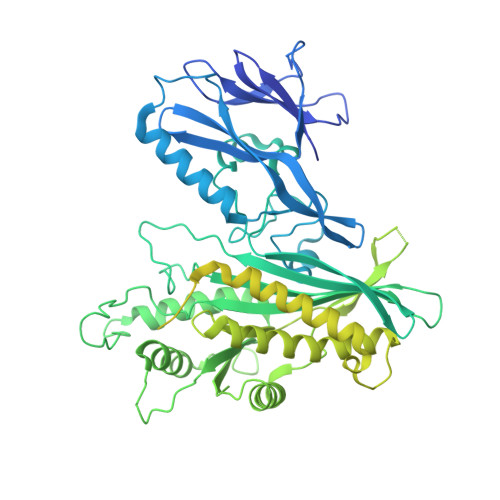Insights into Lysosomal PI(3,5)P 2 Homeostasis from a Structural-Biochemical Analysis of the PIKfyve Lipid Kinase Complex.
Lees, J.A., Li, P., Kumar, N., Weisman, L.S., Reinisch, K.M.(2020) Mol Cell 80: 736-743.e4
- PubMed: 33098764
- DOI: https://doi.org/10.1016/j.molcel.2020.10.003
- Primary Citation of Related Structures:
7K1W, 7K1Y, 7K2V - PubMed Abstract:
The phosphoinositide PI(3,5)P 2 , generated exclusively by the PIKfyve lipid kinase complex, is key for lysosomal biology. Here, we explore how PI(3,5)P 2 levels within cells are regulated. We find the PIKfyve complex comprises five copies of the scaffolding protein Vac14 and one copy each of the lipid kinase PIKfyve, generating PI(3,5)P 2 from PI3P and the lipid phosphatase Fig4, reversing the reaction. Fig4 is active as a lipid phosphatase in the ternary complex, whereas PIKfyve within the complex cannot access membrane-incorporated phosphoinositides due to steric constraints. We find further that the phosphoinositide-directed activities of both PIKfyve and Fig4 are regulated by protein-directed activities within the complex. PIKfyve autophosphorylation represses its lipid kinase activity and stimulates Fig4 lipid phosphatase activity. Further, Fig4 is also a protein phosphatase acting on PIKfyve to stimulate its lipid kinase activity, explaining why catalytically active Fig4 is required for maximal PI(3,5)P 2 production by PIKfyve in vivo.
Organizational Affiliation:
Department of Cell Biology, Yale School of Medicine, 333 Cedar Street, New Haven, CT 06520, USA.














